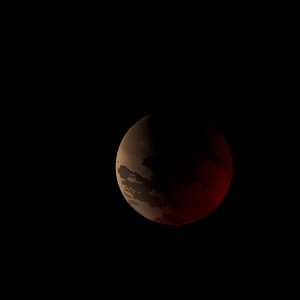|
|
Space Astro
|
Info for exoplanet "Ewys-en"
| Scientific (actual) data |
|---|
| Name | Kepler-1239 b |
| Planet status | Confirmed |
| Radius | 0.259 |
| Orbital period | 5.19104 |
| Discovered | 2016 |
| Updated | 2021-02-05 |
| Tconj | 2454970 |
| Publication | Announced on a website |
| Detection type | Primary Transit |
| Alternate names | 2MASS J19323057+4219123 b, K02439.01, KIC 6867555 b, KOI-2439 b, KOI-2439.01 |
| Star name | Kepler-1239 |
| Right ascension | 293.13° |
| Declination | 42.32° |
| Mag j | 14.34 |
| Mag h | 14.122 |
| Mag k | 14.354 |
| Star distance | 2511 |
| Star metallicity | 0.22 |
| Star mass | 1.4 |
| Star radius | 1.57 |
| Star age | 1.62 |
| Star temperature | 6564 |
| Star alternate names | 2MASS J19323057+4219123, KIC 6867555, KOI-2439 |
| Wikipedia article | Kepler-1239 b |
Back
| |
| Fictional info (?) |
|---|
| Suggested name | Ewys-en |
| Planet type | Cold planet |
|
| Atmosphere | Hydrogen | 65% |
| Ammonium hydrosulfide (NH4SH) | 21% |
| Nitric oxide | 8.9% |
| Formaldehyde | 4.5% |
| Neon | 0.48% |
| Atmospheric pressure | 30 bar |
 |
| Moon | Adamo-jutoq-es | Small slightly egg-shaped ice comet |
| Witu-n | Large slightly egg-shaped crater-filled moon |
| Enedu | Medium-sized slightly egg-shaped crater-filled moon |
| Google search for Ewys-en |
|
Website by Joachim Michaelis
|
|
|
|